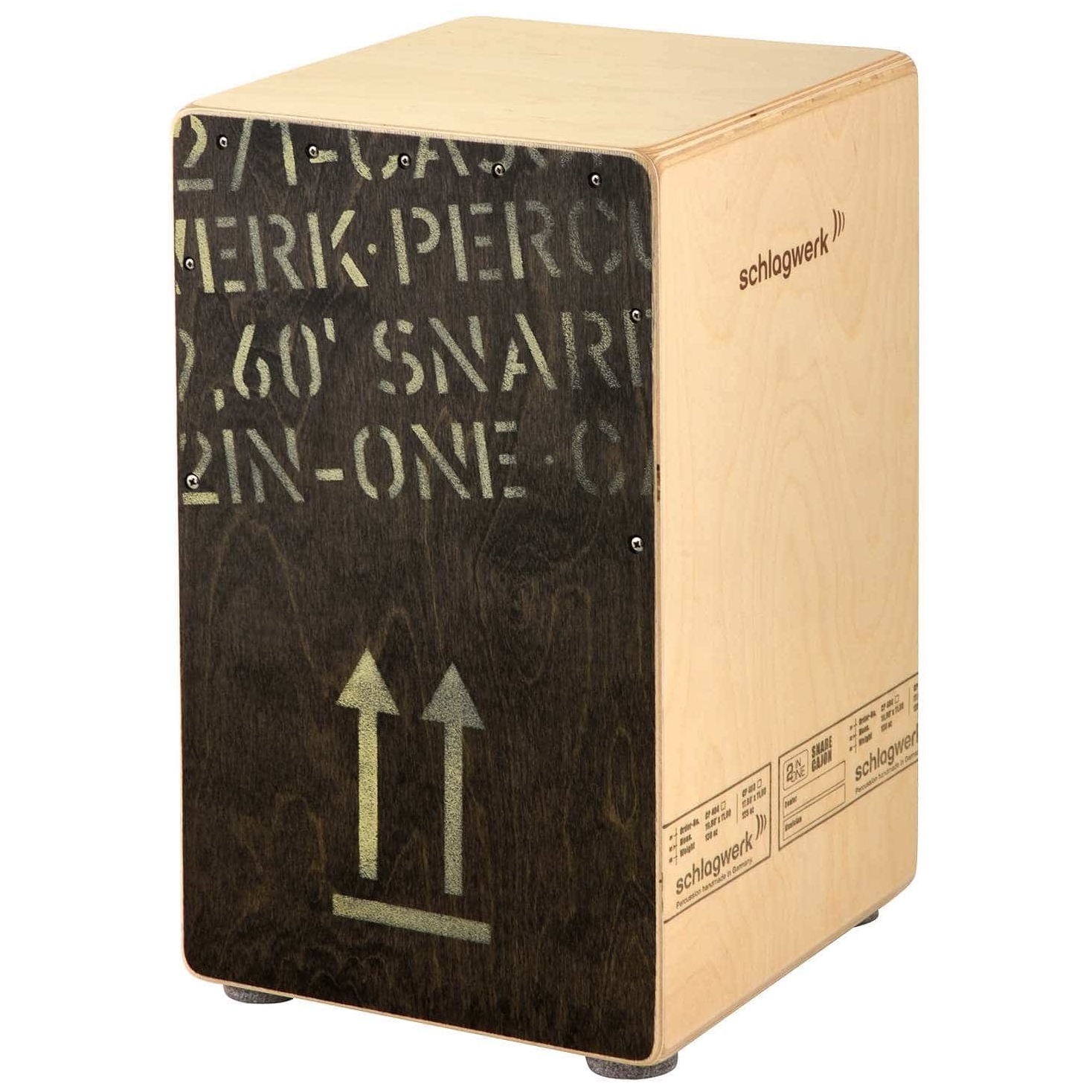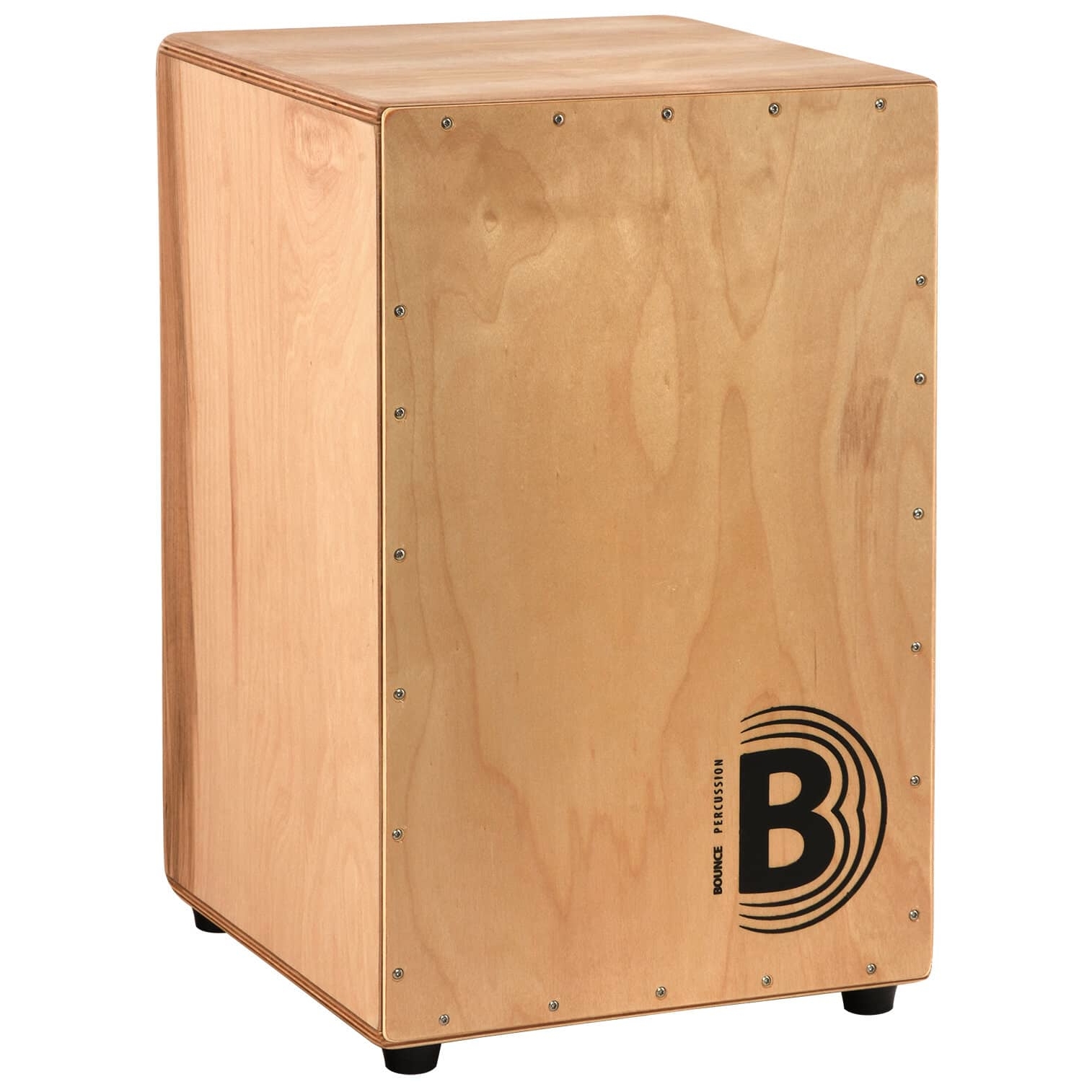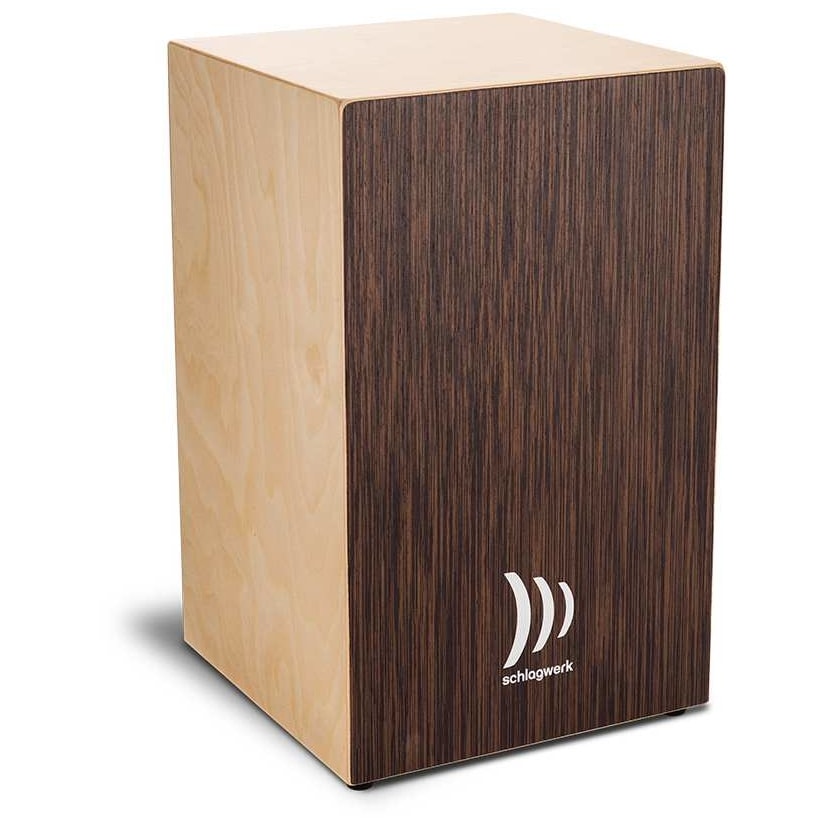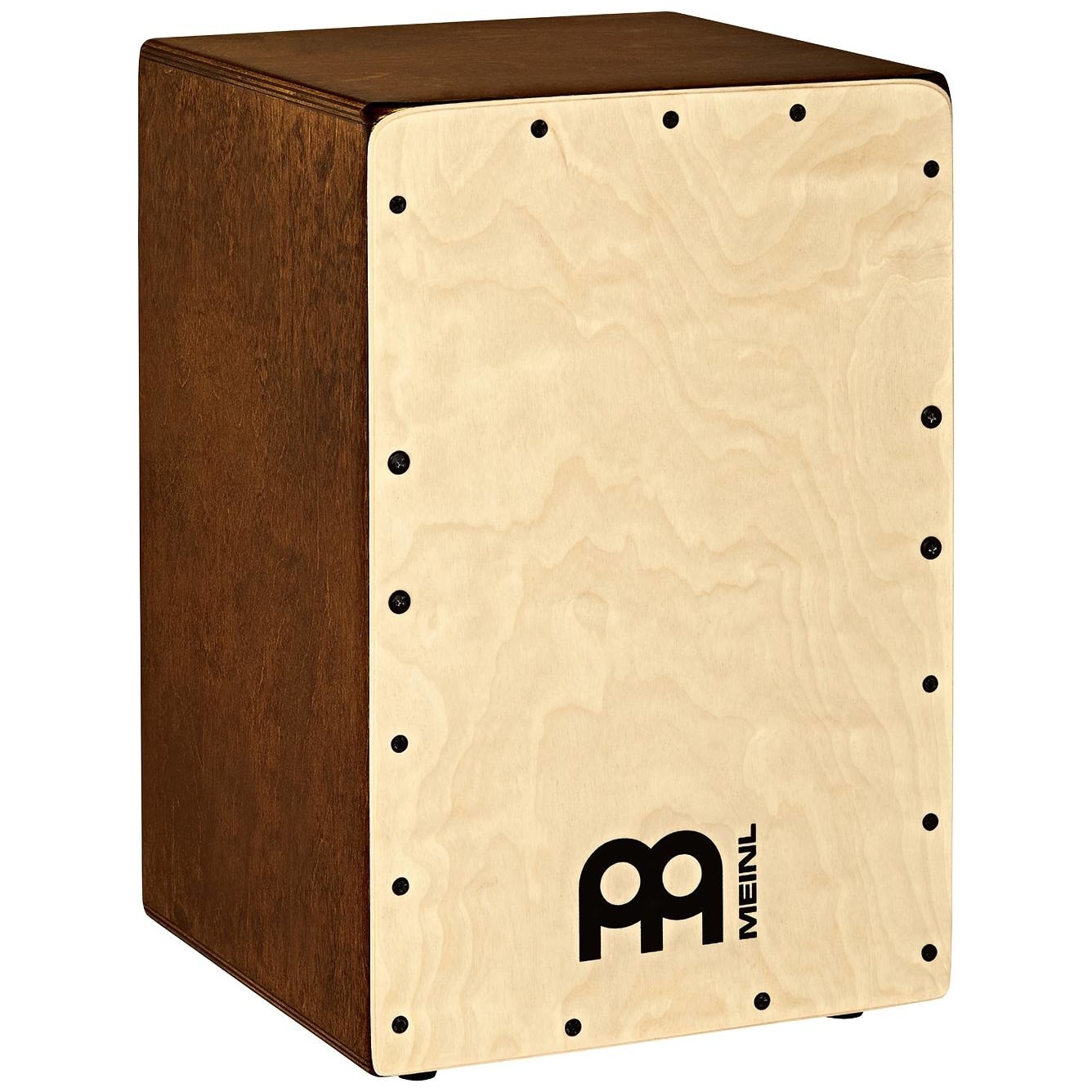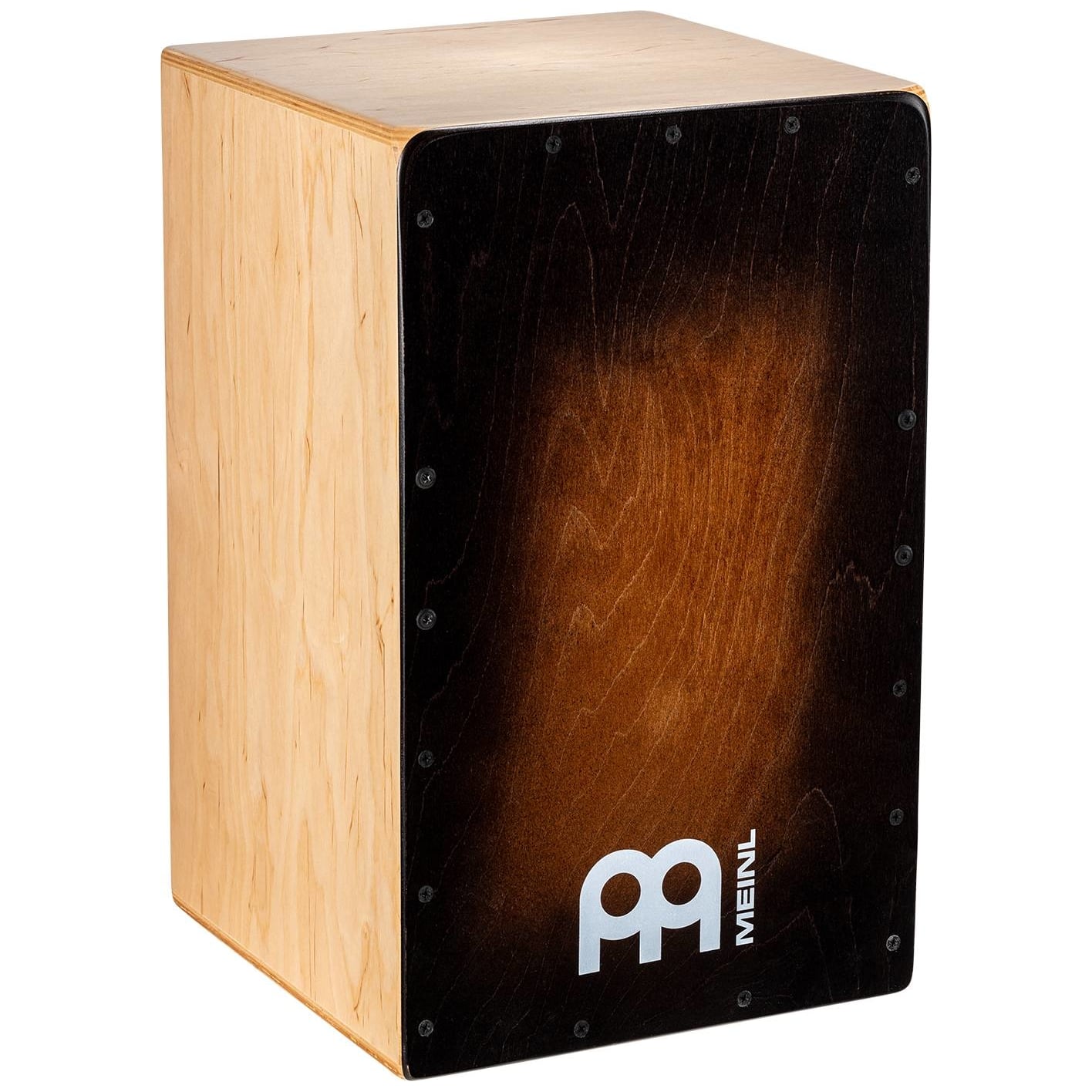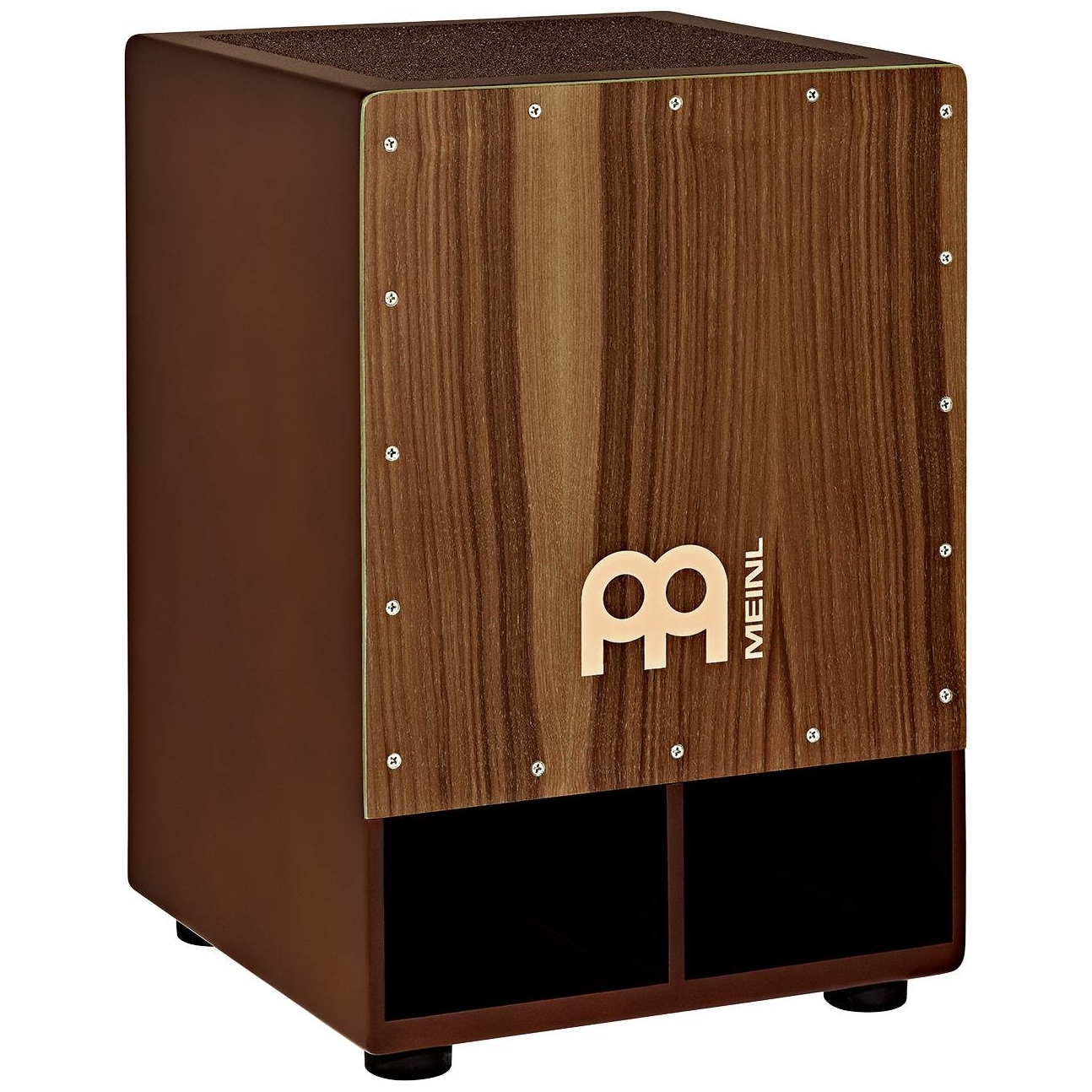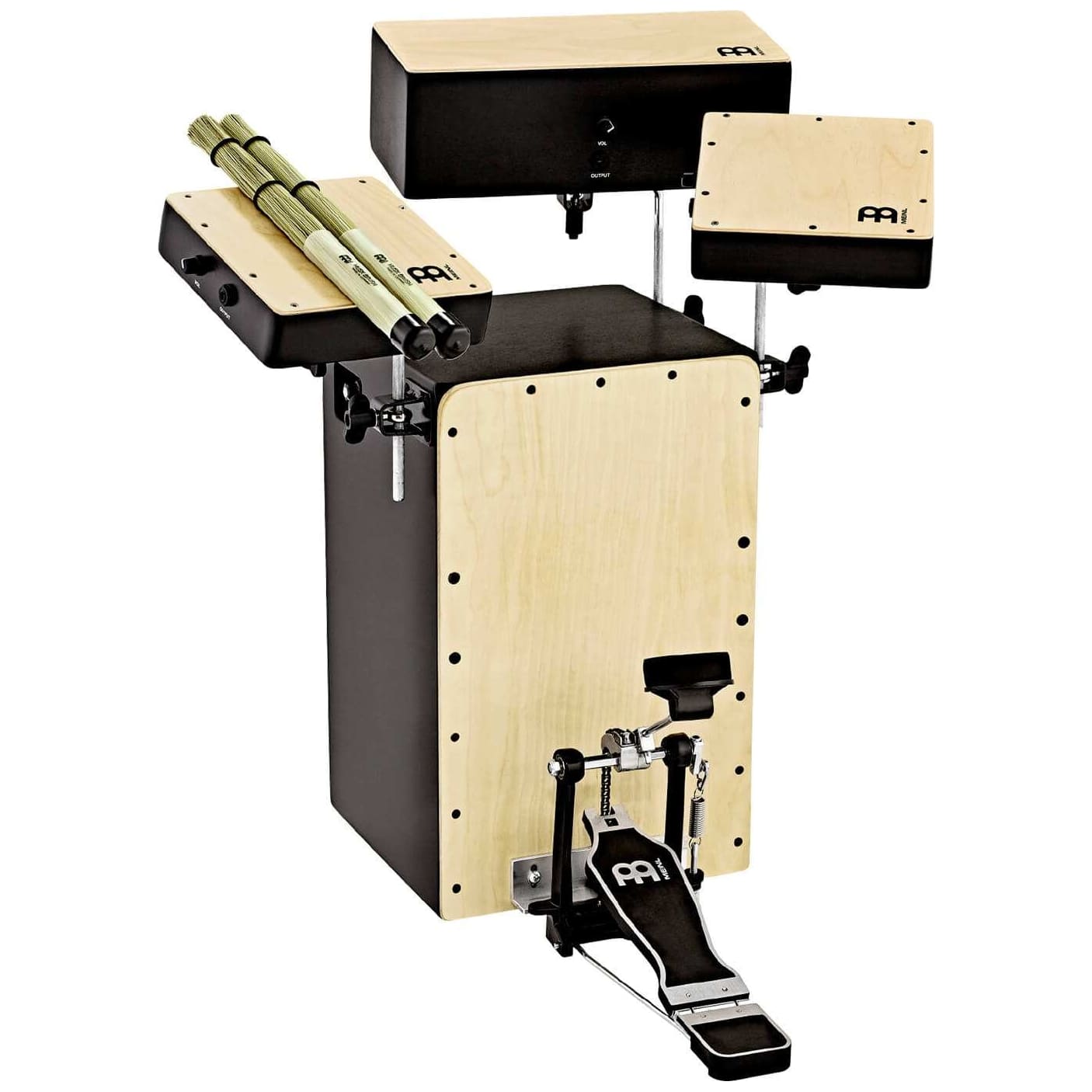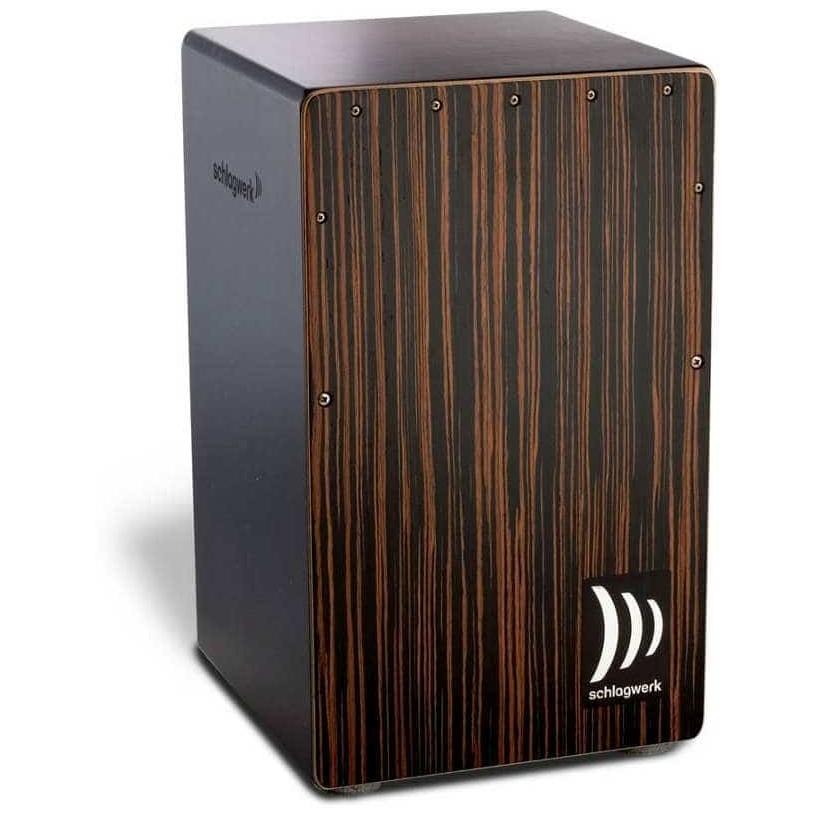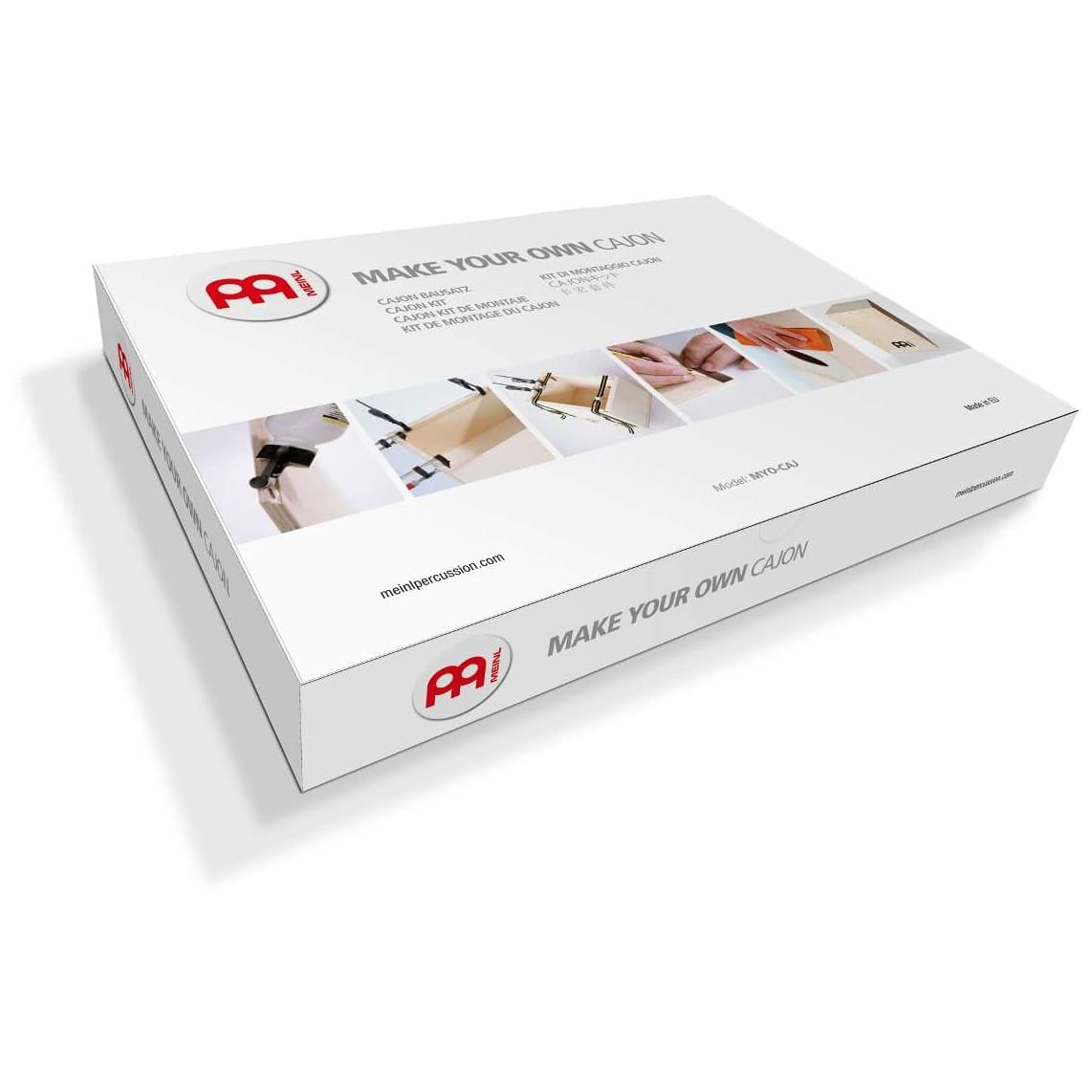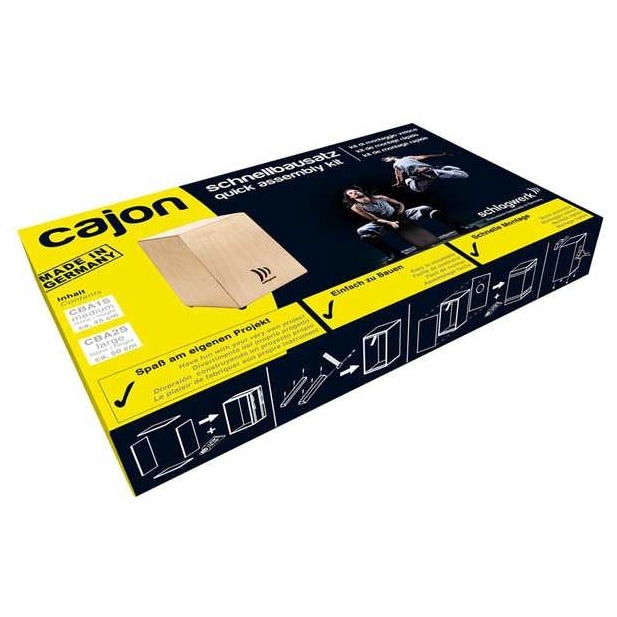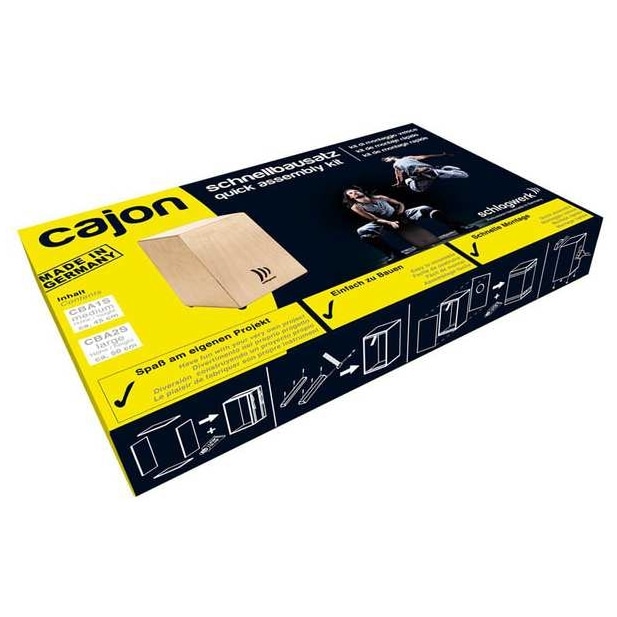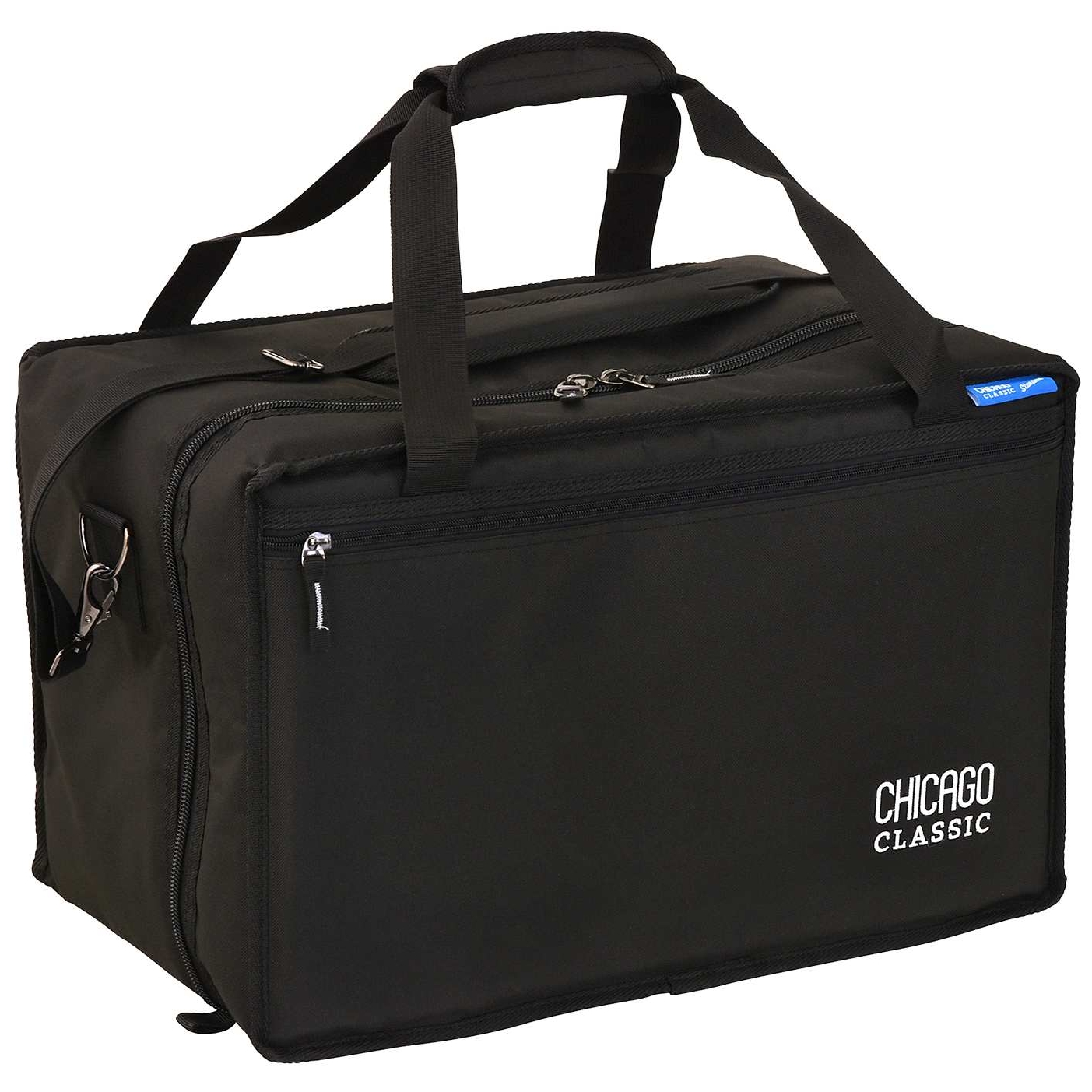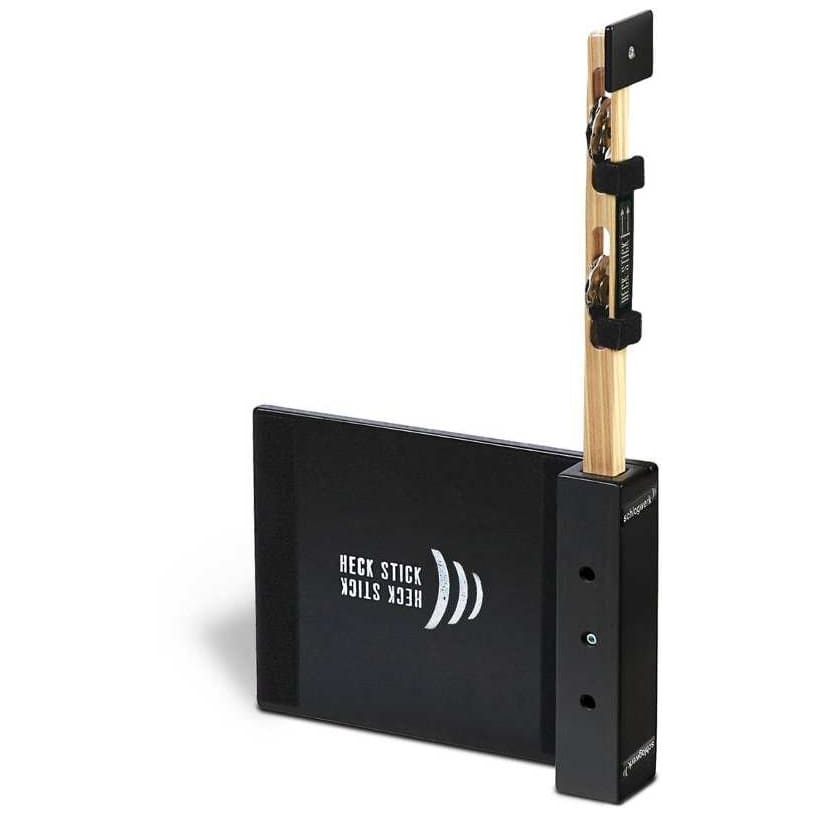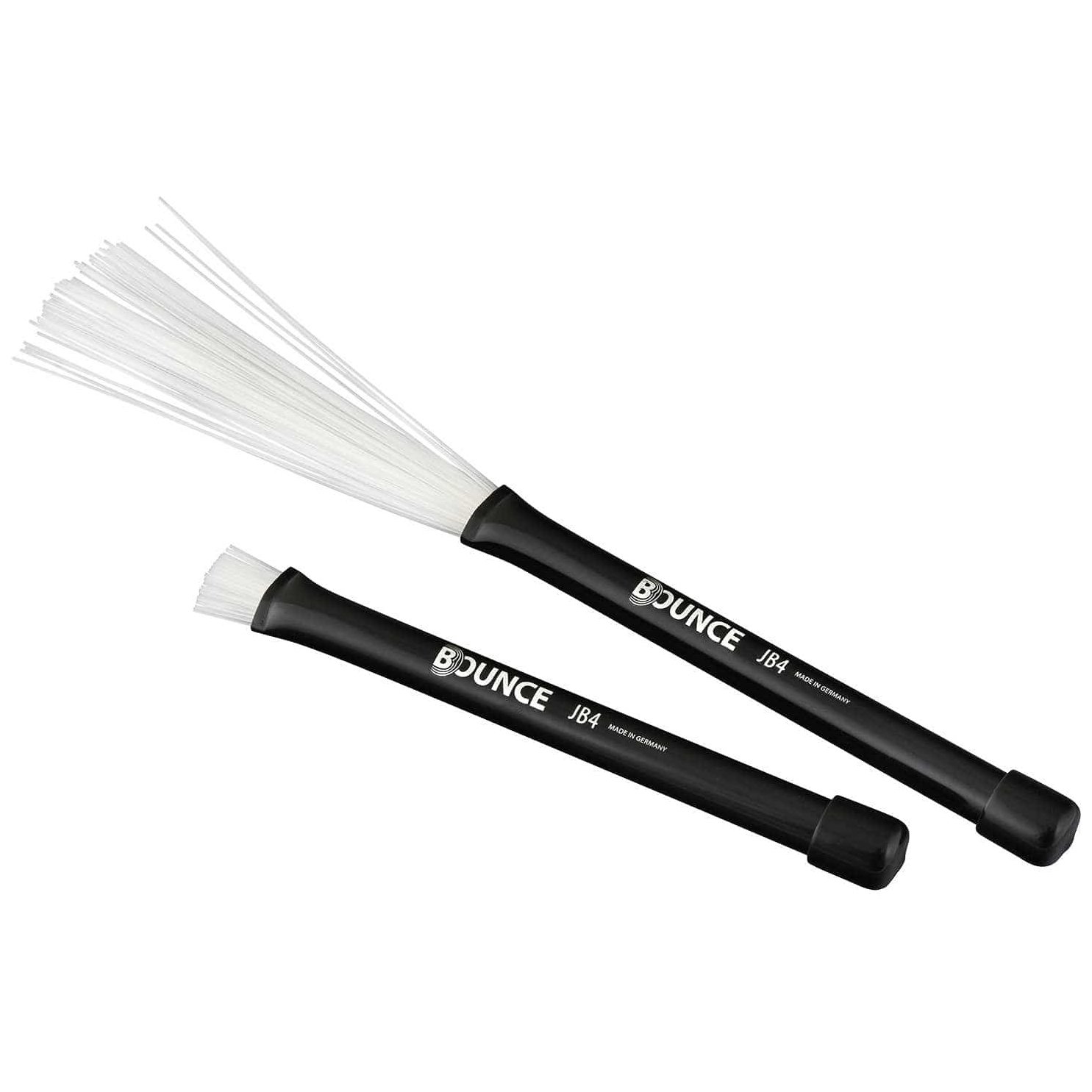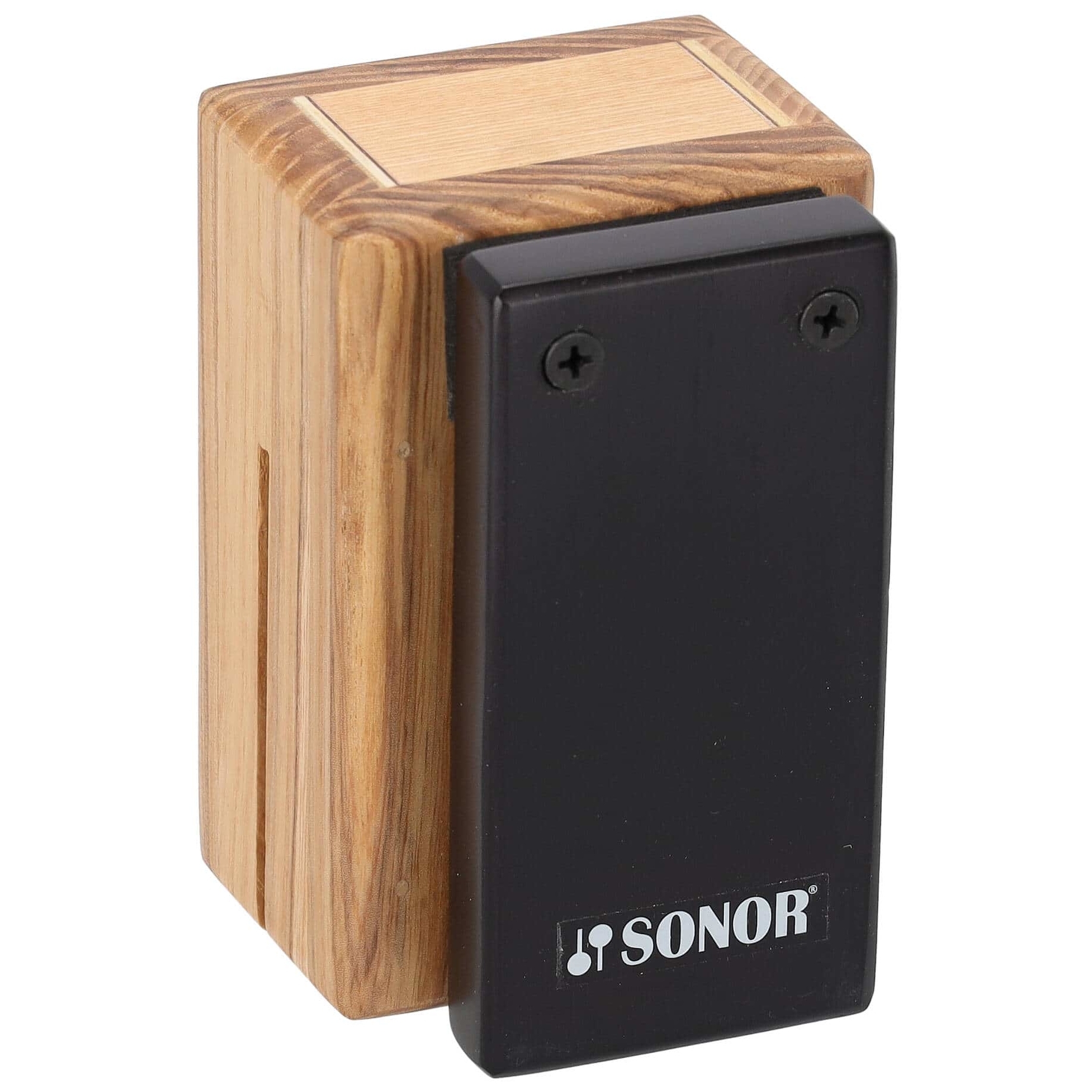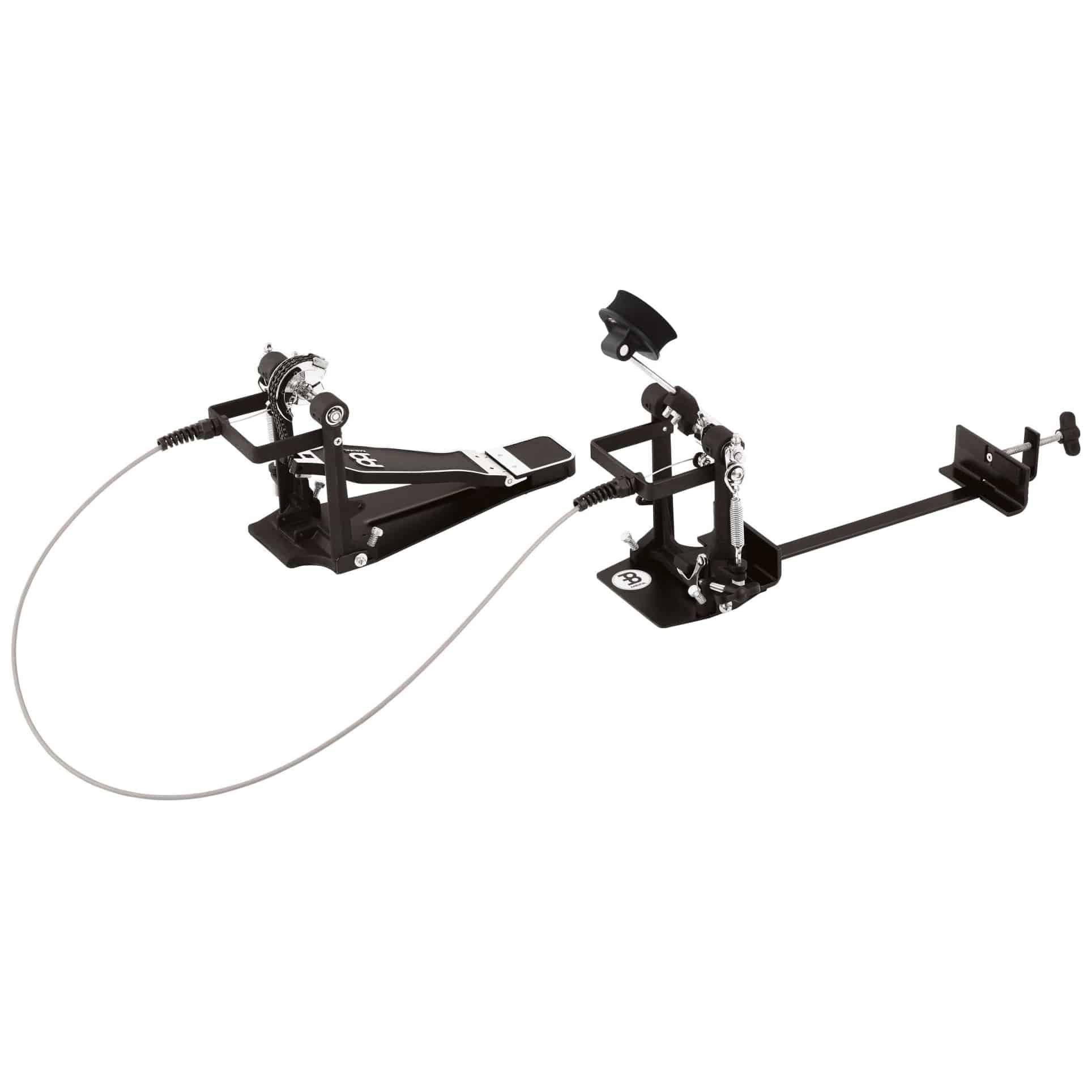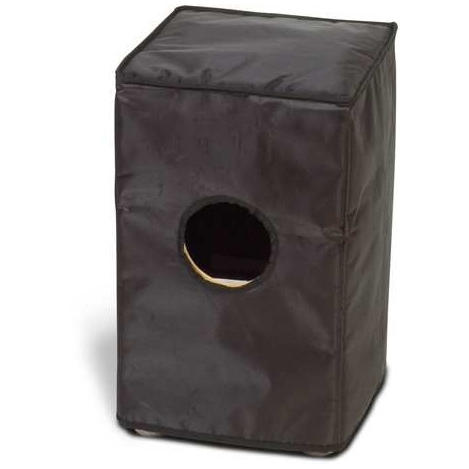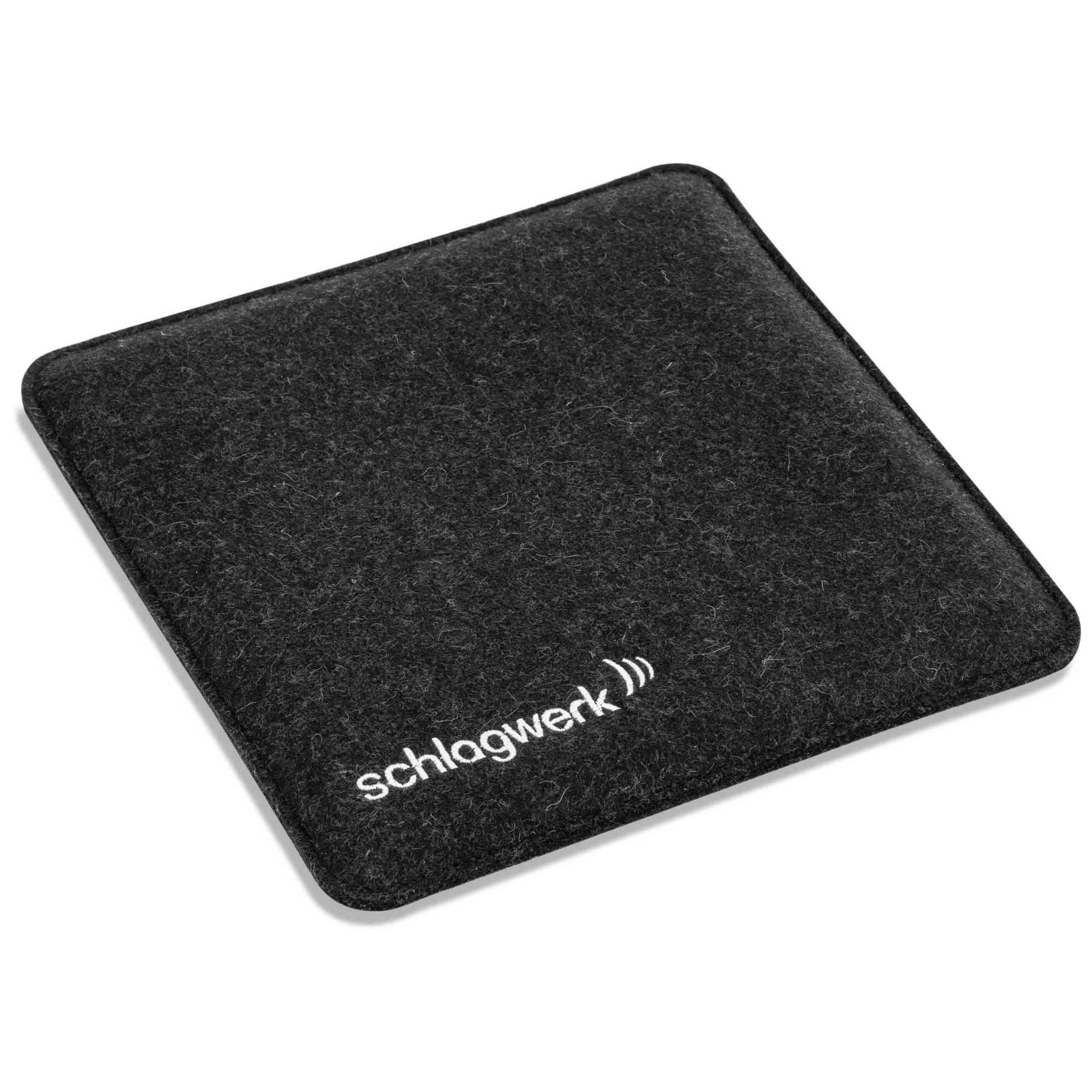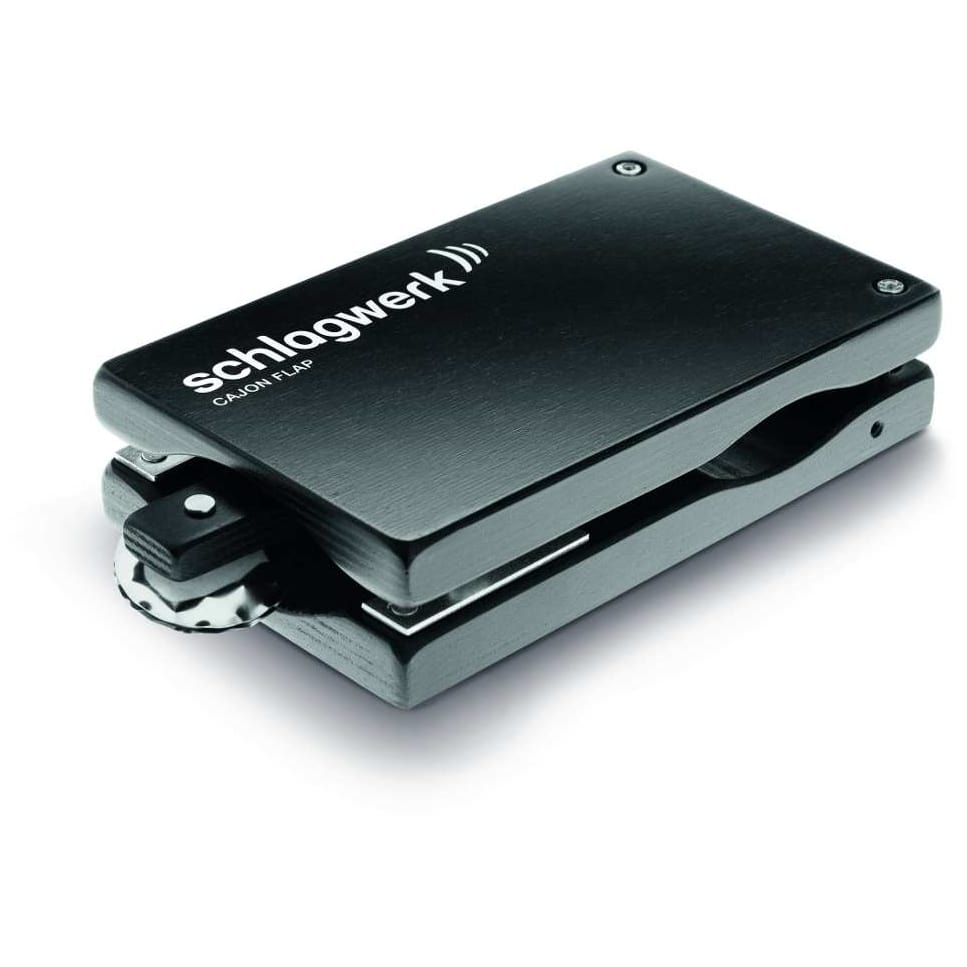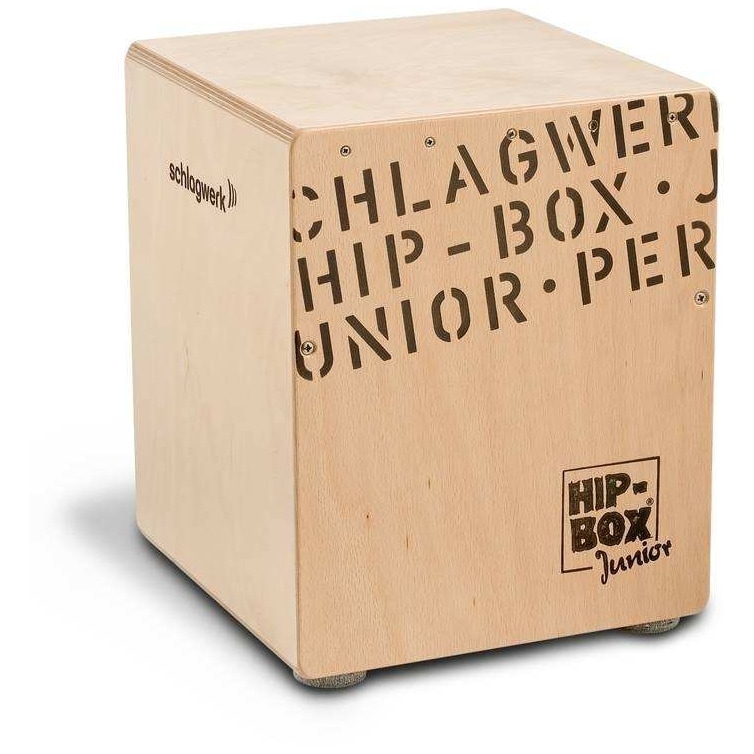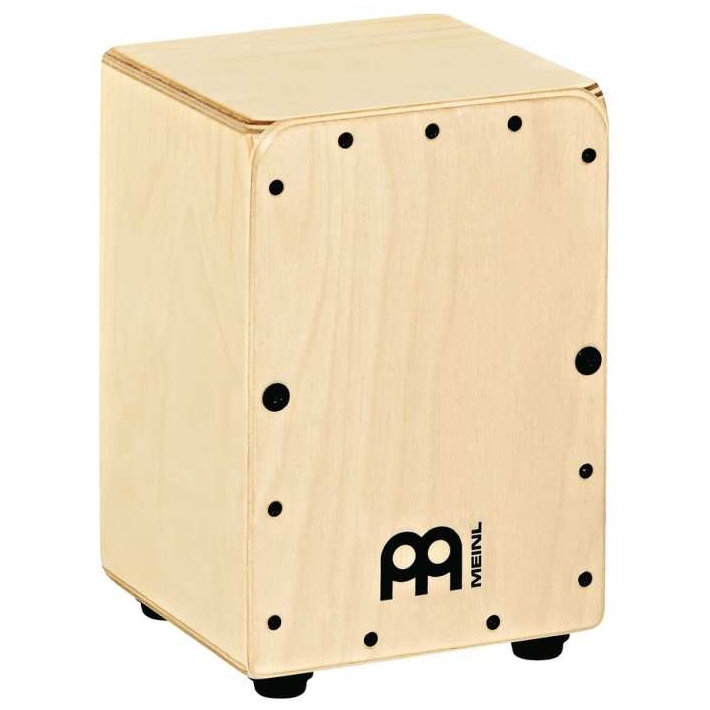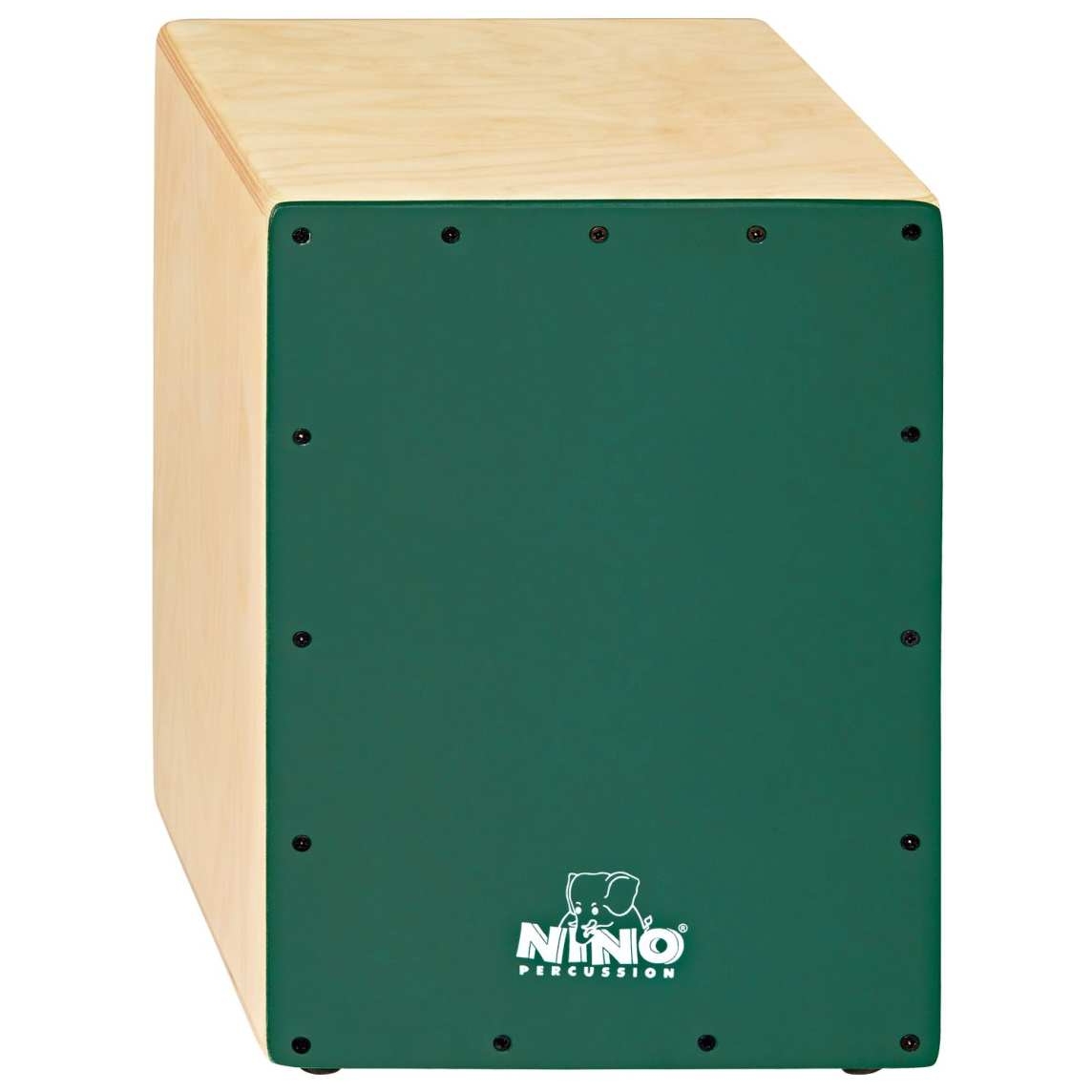The Cajon
From the transport box to the box drum
Do you still remember the moment when you first noticed the rhythm or percussion instrument Cajon? I can still remember it very well. It was in a typical mid-90s pedestrian street. A guitarist stood in front of the glass storefront of a large department store chain with an acoustic guitar in his hand. With his black and red suit he looked like a Spanish bullfighter. The torero, who played the guitar, was rhythmically accompanied by a fellow musician. The accompaniment sounded a bit like the bass drum and snare playing together, and I actually had to look twice to believe my eyes.
What is that type doing there? I had never seen anything like it! The supposed drum sounds did not come from a drum set, but from a rickety wooden box on which the drummer had sat. When he played, he leaned slightly forward and produced deep, bass drum-like sounds with the heel of his right hand and, with the help of his left hand, a sound that was similar to the sound of the snare drum.
Impressed by the southern rhythm, a few pennies fell into the opened guitar case. Unbeknownst to me, I hoped with my generous gesture that the drummer would soon be able to afford a real drum kit with my money. A few years have now passed and I have been taught otherwise. In retrospect, the musician I had dismissed as a poor person at the time has turned out to be a true pioneer. The once rickety wooden box is now incredibly popular.
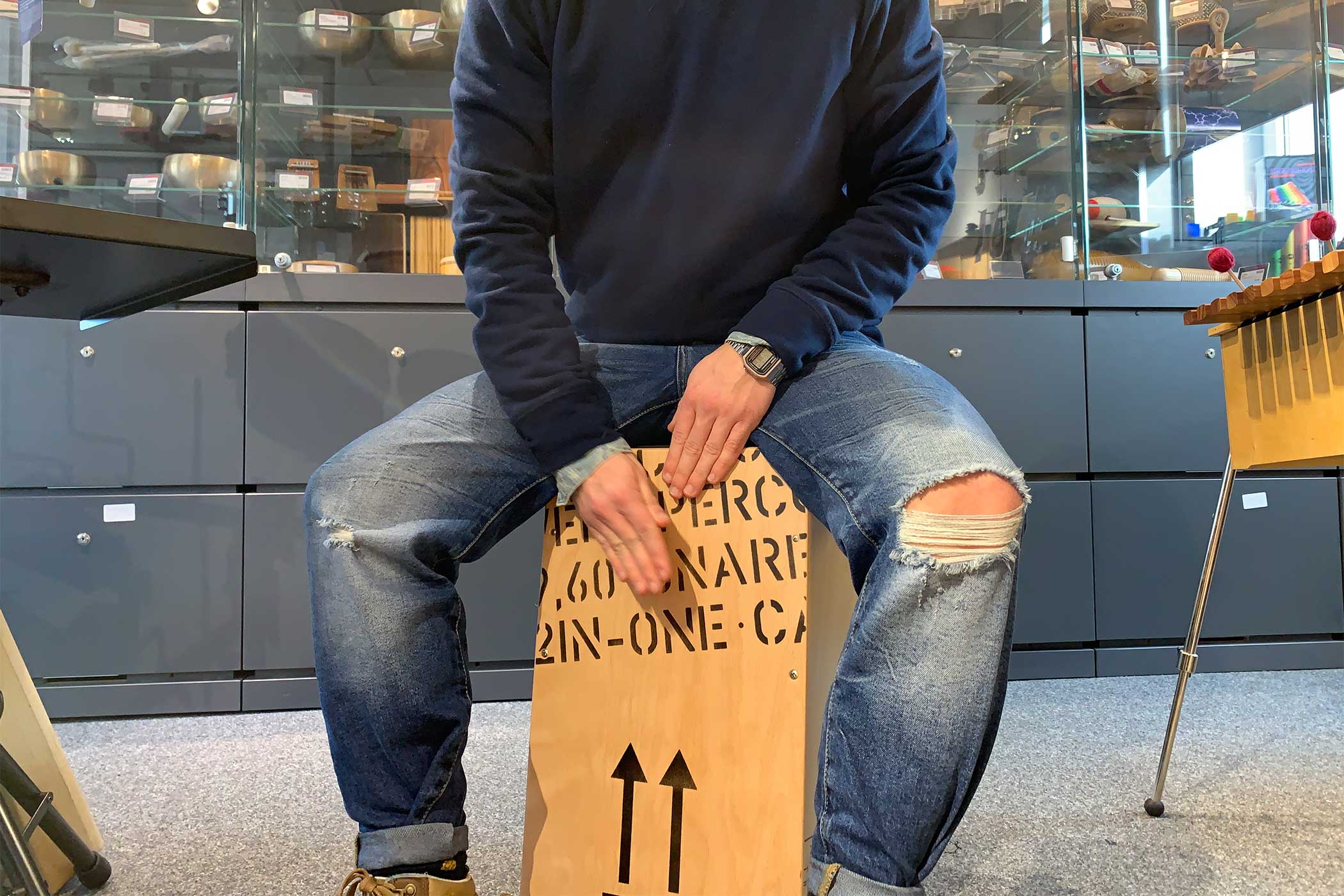
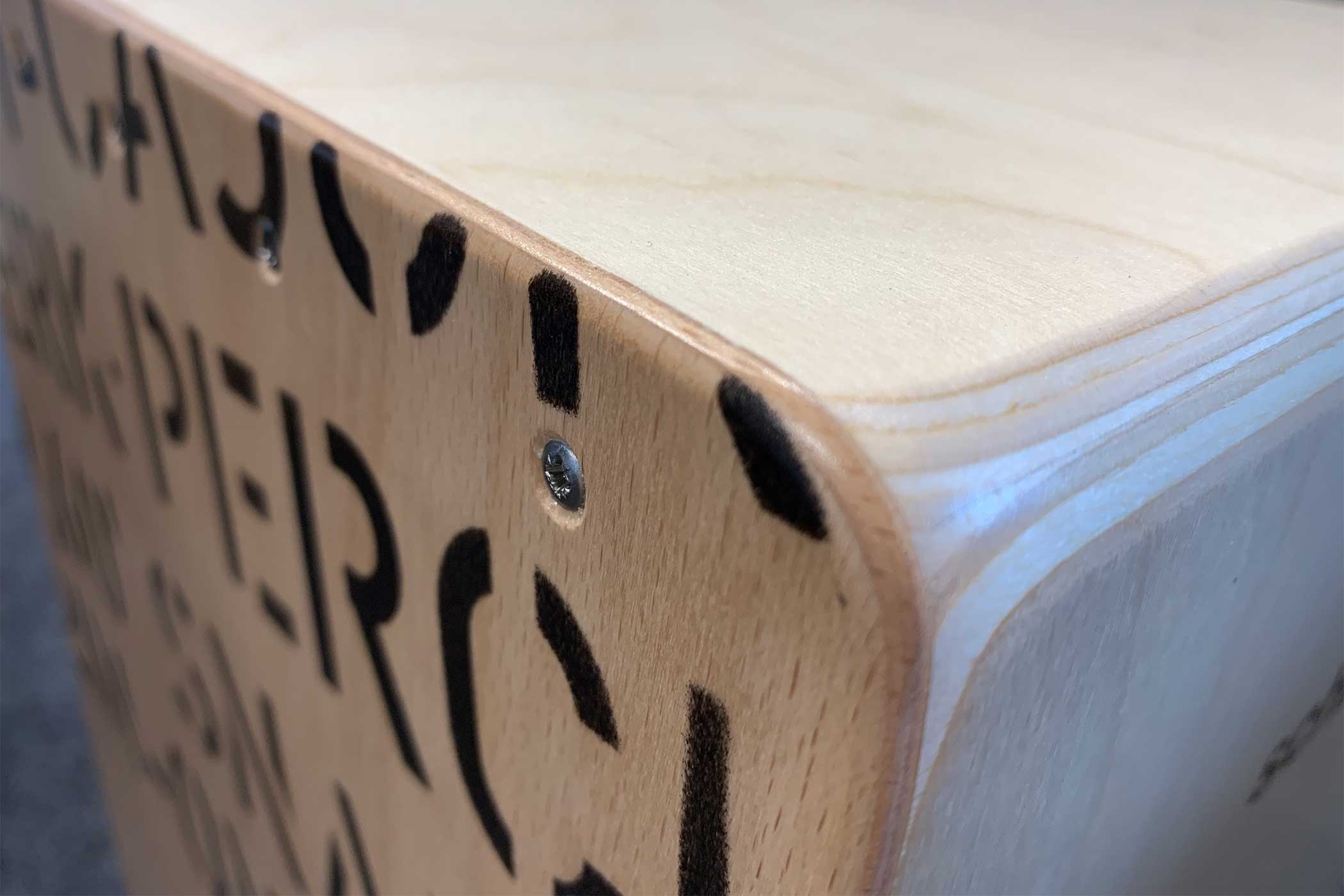
The Cajon: A historical leap in time
The percussive musical instrument Cajon, as we know it today, originally comes from Peru and arose out of necessity. Because as we all know, this is what makes you inventive. In colonial times, the first variants of the Cajon emerged from simple transport boxes. These boxes were made of wood and were mainly used for transporting fish, fruits and other foodstuffs. From then on, the African slaves - from whom not only their belongings but also their instruments and drums had been taken - converted these transport boxes and used them for tapping and drumming rhythms. Drumming and making music together strengthened the feeling of togetherness among the slaves. The hype surrounding the sounding box drum grew over time and the technology for sound generation was further developed. The models no longer only come from Peru, but are manufactured all over the world by well-known manufacturers in different designs. However, the basic principle of today's cajons still follows the same characteristics of the earlier Afro-Peruvian construction method.
The structure of a cajon
The Cajon is basically made up of 6 wooden panels to form an upright cuboid. Although there are also models that are made of plastic such as acrylic or even sturdy cardboard, the warmer-sounding raw material wood has become established as the starting material. The wooden panels are usually made of multi-layer plywood. This impresses with its very good resonance behavior. In some cases, the manufacturing companies also use solid wood for production. The most common types of wood include birch and beech. If you want something a little more exotic, you can also find models made of alder, wenge or walnut. When it comes to wooden panels, a distinction is made between resonance and impact panels (back and front), as well as the slightly thicker side walls that form the body.
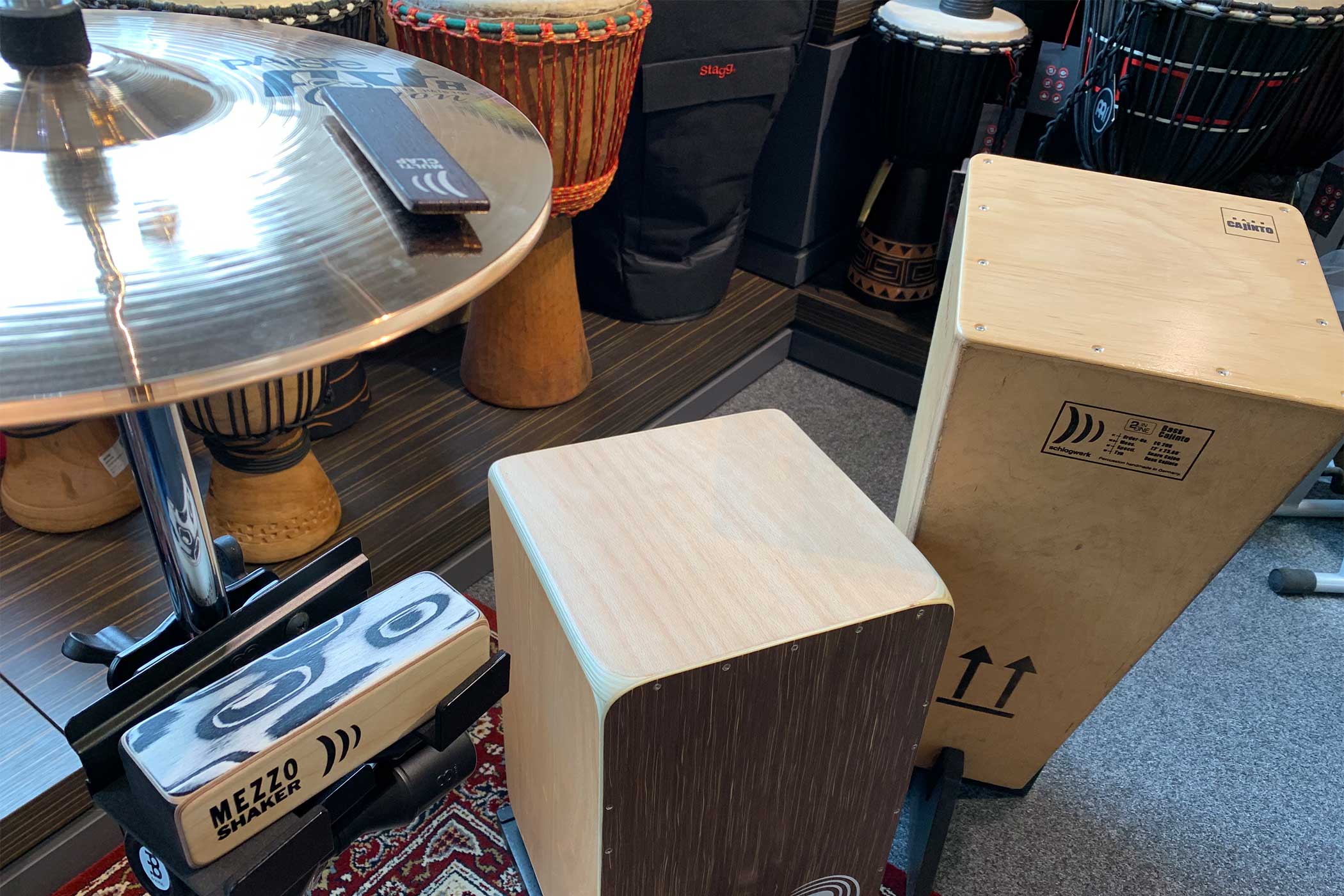
Know-how
With us you not only get what you need – we also show you how it works! To the guides.
The sound generation of the cajon
The sound generation inside the Cajon works according to the same principle as an acoustic guitar. When the striking plate is struck, a sound is generated inside the body, which is amplified by vibrations in the resonance body. These vibrations can then escape again through the sound hole, which is located in the resonance plate on the back. The volume generated when playing the cajon is usually sufficient for small events and acoustic sets. If you want to get louder, the wooden box is also perfect for recording with a pickup or microphone. You can achieve very different sound results by positioning the microphone.
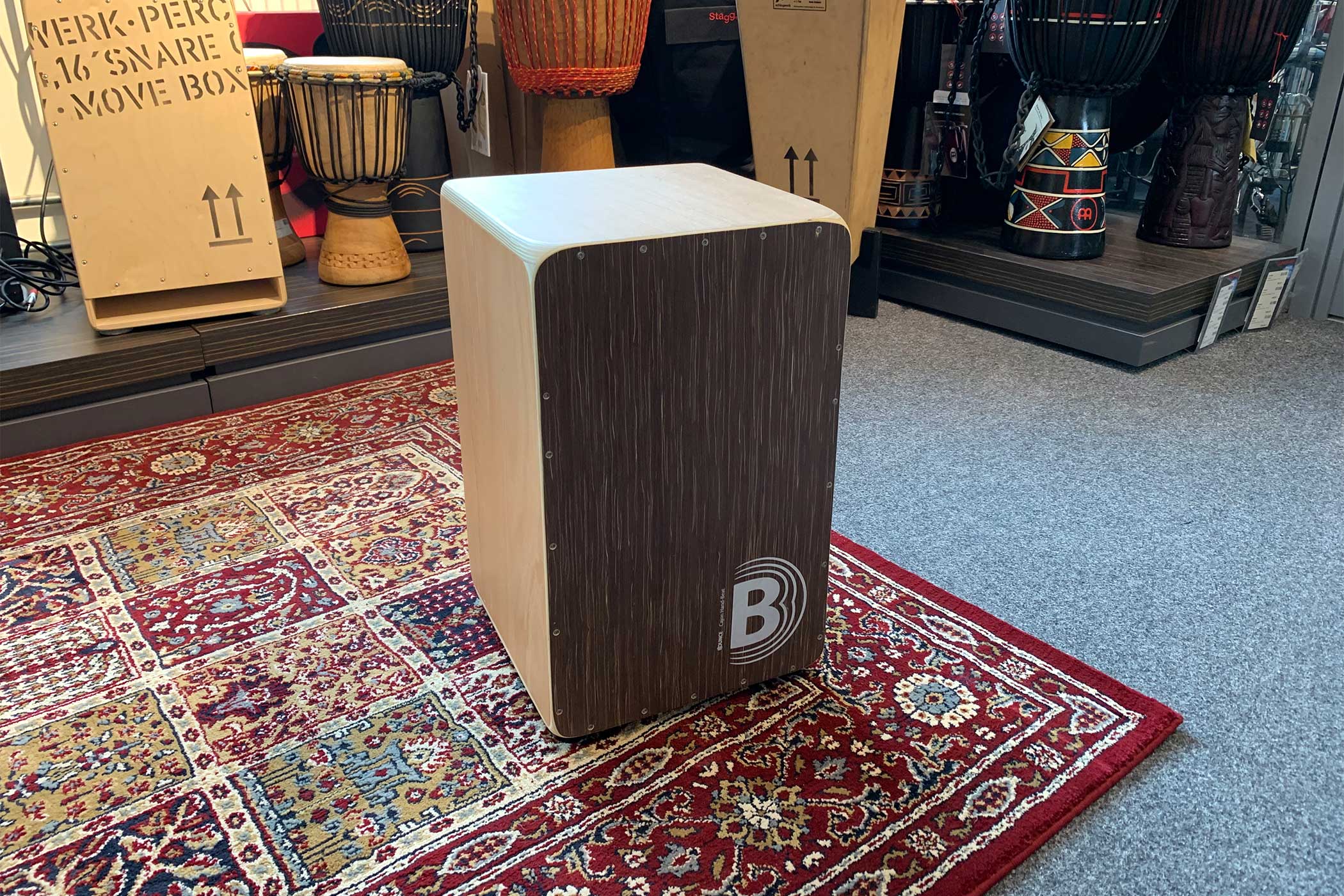
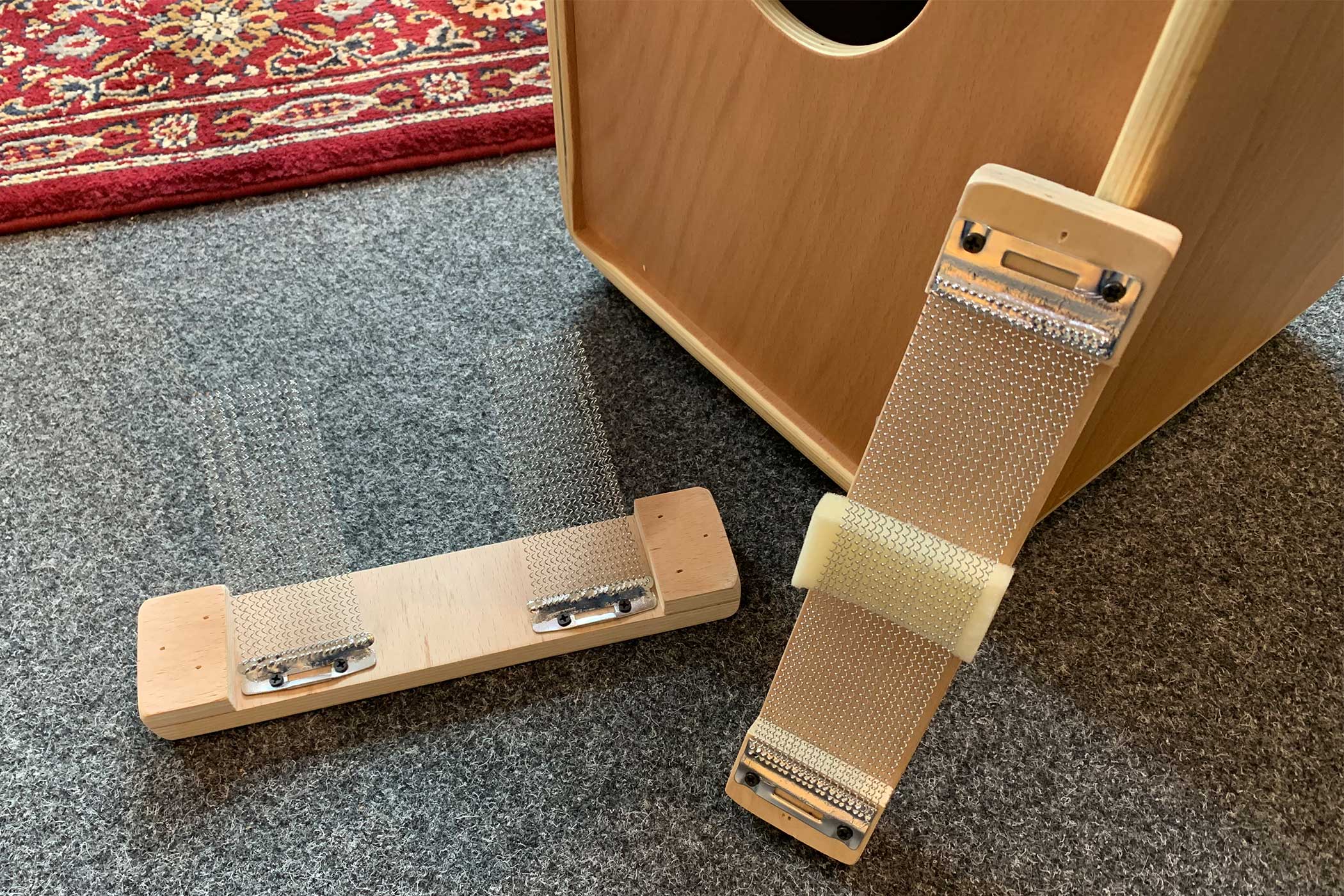
The sound of the Cajon
The “clattering” sound is still characteristic today. This used to arise because the upper area of the playing surface was not connected to the body. With every strike the pickguard rattled against the body frame. Through minor changes and modifications with components made of metal, for example, the Cajon's typical buzzing (snare) tone has emerged over the years.
Today, depending on the manufacturer, there are several ways to generate the snare sound. Sometimes wires or tensioned guitar strings run diagonally behind the playing surface or entire snare carpets are mounted behind it. With some cajons, the snare effect can be conveniently switched on and off, dampened and its tension can be varied. Sometimes the snare effect can even be completely expanded and replaced with other effects . This allows for a lot of sound variations.
Basically, the sound of the Cajon can be described as very versatile and warm. Depending on the striking technique and playing zone, which we will take a closer look at in the next paragraph, very different sounds can be produced with the cajon. The spectrum ranges from deep, rich bass drum sounds to bright, almost overtone-rich conga sounds. In between, a rattling or crisp snare sound resonates and sounds - depending on the setting and model .
The different playing zones of the Cajon
The playing surface of a Cajon can be divided into different playing zones. The bass area is located relatively in the middle of the playing surface . Here, the name speaks for itself. Deep bass drum-like sounds can be created with the flat, outstretched hand or the heel of the hand. Directly above are the so-called slap and tip shape zones. This is where the characteristic buzzing snare sound is created when you hit it. To the left and right of it - i.e. in the upper corners of the playing surface - we find the clap corners. Here the typical Cajon sound is mixed with overtones. When the snare effect is switched off, similarities to a high-pitched conga can be seen. Percussionists sometimes even use the surrounding side walls in their playing. The thicker wood creates very nice tonal differences and possible combinations. We recommend incorporating the side walls into the Cajon game. In our video we demonstrate the different play zones again.
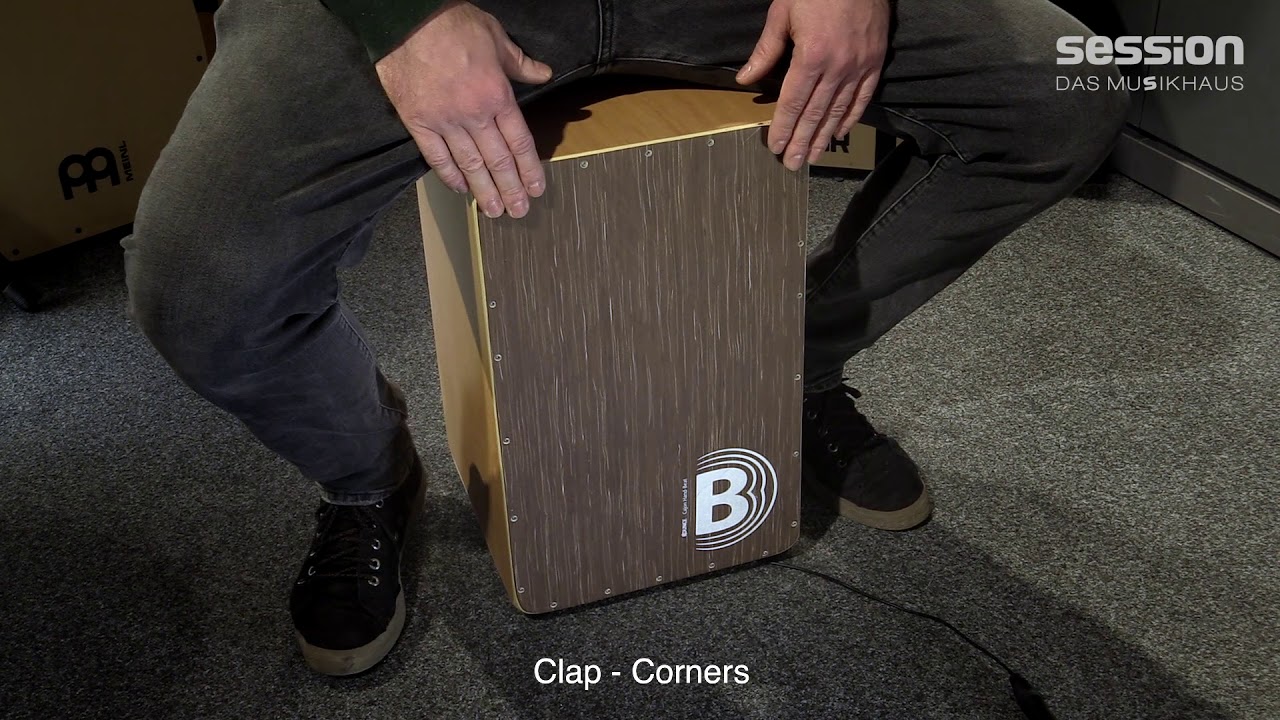
Special forms of the Cajon
Under the umbrella term Cajon - which is primarily based on the Afro-Peruvian models - other so-called special forms have of course also developed over time. We would like to briefly introduce you to the most important Cajon variations.
Bass cajon
A bass cajon can be explained very simply. In most cases, this hides a variant that is almost twice as wide as the typical Afro-Peruvian version. The larger resonance space allows Cajon sounds to be produced with an even deeper bass foundation. Another way to get deep bass frequencies from your Cajon is through a tuning method. By using a so-called CajonPort, which comes from Kickport, you can create fuller and richer Cajon sound . mounting is child's play. The CajonPort is simply plugged into the sound hole of the Cajon and does the rest.
Cuban cajon
The Cuban Cajon is traditionally available in 3 different sizes. These are named in descending order of size : Salidor, Tres-Dos and Quinto. These cajons are usually clamped between the legs or held on a separate stand. Only the largest of them - the Salidor - is played by the percussionist while sitting. Over time they were replaced by conga models with different tunings.
Slap top cajon
The slap-top cajon is another special form of the classic cajon. Due to its special form, it is clamped between the legs. Its form resembles a T. The playing surface rests on the player's thighs when playing. They are available in different versions. The snare effect and different sound holes or slots are part of the basic equipment. Some models are already equipped with a pickup system with integrated EQ .
Cajon kits
The DIY movement is on the rise! Everything is homemade now. So why not build a musical instrument or even a cajon yourself. Various manufacturers such as Schlagwerk and Meinl already offer prefabricated parts and complete packages to get closer to your dream of building your own Cajon. The DIY and Make Your Own Cajon kits are inexpensive alternatives to get the popular box drums. The construction fun is included free of charge with the purchase.
Buy Cajon accessories and add-on extensions at session
A lot has happened in the accessories market for percussion instruments in recent years. So it's not surprising that all sorts of useful helpers and extensions - so-called add-ons - have become established for the popular box drums. In addition to simple and padded seat boxes (Cajon pads) and practical transport bags, you can expand your Cajon into a multifunctional Swiss army knife using simple Velcro strips.
From assertive multiclaps, with which you can create countless "clicking" sounds, to different flap sets, for jingle, clave and/or castanette sounds, to side kick and foot machine extensions, musical creativity is almost there no limits set.
If you like it electronically, you can either use the Roland EC-10 Electronic Cajon or take your Cajon sound to another level with appropriate pickups, microphones and special Cajon sound modules. Special sticks and brooms as well as ergonomic adapter round off the range of accessories.

The posture when playing the cajon
As with all movement sequences we know, we should pay attention to good posture when playing the Cajon. In order to place our shots optimally in the different playing zones and also to avoid back pain, we should always ensure an upright upper body posture. When we play, our upper body is slightly bent forward. We should be careful to keep our backs straight. A little tip: If the Cajon is tilted slightly backwards while playing, the playing surface is much easier to reach. Optional angle that you can slide under the Cajon, such as the Schlagwerk Ergo Cajon adapter, make playing much easier.
Cajons for children
When selecting and ultimately purchasing their Cajon, children or smaller people should make sure that they can operate the box drum well. If you have to lean too far forward, you might want to use smaller versions or the special models for children.
 Trusted Shops: 4.84/5,00 (10085)
Trusted Shops: 4.84/5,00 (10085)

